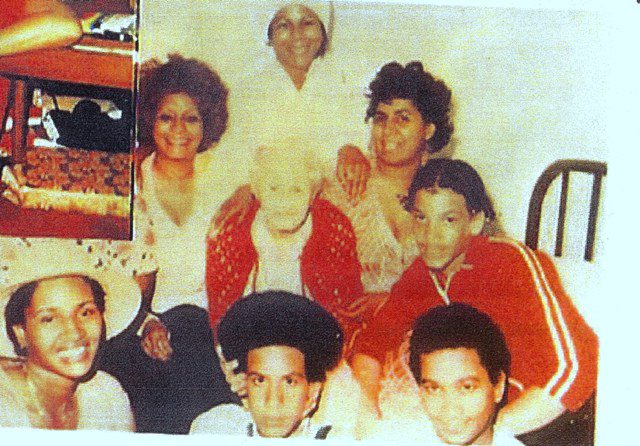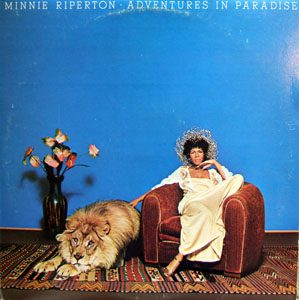Overview and Thesis
Minnie Julia Riperton is a vocalist and songwriter whose career skyrocketed in the 1970s. With hits like “Lovin’ You,” “Les Fleurs,” and “Back Down Memory Lane,” her influence on the Soul and R&B genre is undeniable. With her soft but charismatic personality, she charmed and captivated the public inside and outside of her musical career. Riperton was an influential artist because of her vocal ability, personality, and legacy.
Artist History and Development

Music Career
Riperton had a unique vocal personality. Because of her 9-and-a-half-year history as an opera singer, she developed an interesting and captivating technique.
Minnie Riperton’s range was a large part of her appeal. It spanned about 5 octaves, and her highest recorded note was an F7!
Early Career: The Rise of Minnie
In 1961, Minnie was recruited by Raynard Miner for the teen girl group he directed called “The Gems” for Chess Records, a local recording studio that specialized in blues and R&B.
Her role as the lead singer in the group allowed her more opportunities at Chess singing back-up vocals for artists like Etta James, Fontella Bass, Chuck Berry, and Muddy Waters.
At the age of 18, Minnie was rebranded as a solo artist under the name Andrea Davis, but she still did not achieve success beyond local fans. She worked as a receptionist for the Rolling Stones, also singing backup for other artists. However, in 1967, Minnie broke away from her reputation in the gems to join Rotary Connection, a psychedelic soul group featuring Richard Rudolph. She became the lead singer of the group, and they released 6 albums together. In 1970, Minnie and Richard got married, and their interracial relationship added to the integrated band’s notability as a form of resistance against Chicago’s segregated music scene.

Mid-Career: Minnie Goes Solo
Minnie’s solo career rose as the group’s career declined. In 1970, she debuted with the release of “Come to My Garden,” produced by Charles Stepney and Richard Rudolph. The album was a part of the “fusion” genre, a mix of jazz, rock, and funk, likely a combination of Riperton’s earlier musical influences. Though it was innovative in its experimentation, this genre was “not widely accepted as an emerging form of Black popular music in the early 1970s.” Critics believed that the sounds being blended together were too different, and that the “whitewashed” Rock and Roll did not combine well with “black” Soul/R&B/funk. Either way, songs like “Les Fleurs” and “Expecting” are still popular with fans today.
"It’s just like, things are coming in from angles, but nothing is colliding. They’re all in concert. It’s pure genius. To be able to hold all of that power and to be able to move around it as an artist, that’s not easy to do.”
- Yola on 'Les Fleurs', Rolling Stones
The release of Riperton’s second studio album, “Perfect Angel” came with the most recognizable song from her repertoire: “Lovin’ You,” featuring a high F#6 note. The song skyrocketed Riperton’s career, topping the US Billboard Hot 100 in 1975.
Late Career and Posthumous Release
After Perfect Angel, Minnie Riperton released three more albums in her lifetime. These include Adventures in Paradise (1975), Stay in Love (1977), and Minnie (1979). Minnie, the last album released before Riperton’s death, leaned more toward electronic and dance genres. One of the most successful songs from this album, Memory Lane, serves as an almost bittersweet recap of Minnie’s life as well as her battle with her illness. The lyrics are likely a reference to the return of her cancer after her initial treatment. Love Lives Forever (1980) was then released a year after her passing.
I’m in the sunshine,
I’m in the rain,
I thought it was over,
Here I go again.
Personality and Image
Minnie Riperton engaged the public with her joyful and optimistic personality, even in the light of danger and misfortune. In an interview on the Sammy Davis show, she recalls a videoshoot involving a lion that attacked her on camera, laughing and joking all the while.

Riperton also had a very public cancer diagnosis. She revealed her diagnosis on television, which was not something many artists would have spoken about at the time, especially to a young audience like hers. She talked very openly about her mastectomy and treatments as well. In an Ebony interview, Riperton says, “My husband just calls [childhood and recent scars] my ‘marks of distinction.’ But the one from the operation, well, to me, it’s just as my husband said—it’s the most beautiful thing in the world because it represents why I’m still alive.”
Minnie Riperton traveled the country to raise awareness about breast cancer.
Death and Legacy
Unfortunately, Riperton’s cancer had already metastasized by the time of her diagnosis in 1976. She underwent a mastectomy and kept touring through 1978, but her cancer would eventually return. This was not publicly announced. Though she was given only a few months to live, Riperton continued recording and put out her last album just two months before her death. In 1979, she passed away at the age of 31.
Her iconic whistle register and range have made a definite impact on the modern music industry. Other artists with 5 range voices, including Mariah Carey, who has acknowledged that she was influenced by Riperton’s range above the scale.
At the time of Minnie’s death, her daughter, Maya Rudolph, was 6 years old. Maya has since grown up to be a successful comedian, actress, and singer, even paying homage to her mother in a photoshoot by recreating album covers as the host of Saturday Night Live.


Conclusion
Minnie Riperton’s career was all about breaking through the mold. From her origins as an opera singer, to her interracial left-wing psychedelic rock band, to her breast cancer advocacy, Riperton was unafraid to publicly face the challenges of her life. Her unique falsetto technique went against the soulful expectations for Black women in music at the time, and her personality was vibrant despite her declining health. She won two Grammy nominations for Best Female R&B Vocal Performance in 1979 and 1980, became a spokesperson for the American Cancer Society campaign, and was even presented the Courage Award in 1977 by U.S. President Jimmy Carter. Her influence can be seen in the music industry today, but there will never be another Minnie Riperton.
Sources Cited
- Stay in Love: The Musical Life of Minnie Riperton: https://scholarlypublishingcollective.org/psup/langston-hughes/article/26/2/191/210706/Stay-In-Love-The-Musical-Life-of-Minnie-Riperton
- Come to My Garden: https://books.google.com/books?hl=en&lr=&id=QOOTEAAAQBAJ&oi=fnd&pg=PT8&dq=minnie+riperton+life&ots=VcXMateUAJ&sig=_KpDp8N60qGDyfshNdIIQhbtwk8#v=onepage&q=minnie%20riperton%20life&f=false
- Black past: https://www.blackpast.org/african-american-history/people-african-american-history/minnie-riperton-1947-1979/
- Minnie Riperton soars, w Stevie Wonder: https://www.udiscovermusic.com/stories/minnie-riperton-lovin-you-song/
- 10 of the best: https://www.theguardian.com/music/musicblog/2016/jun/29/minnie-riperton-10-of-the-best
- She made history: http://shemadehistory.com/her-story-minnie-riperton/


